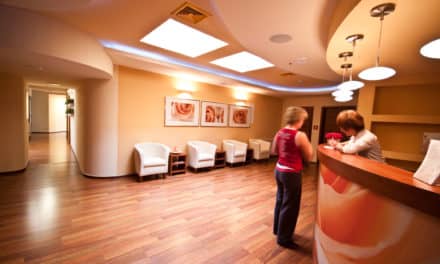Orthodontics had the benefit of not having a wide level segmentation, at least not until now. Here’s what to do if your practice is near the bottom.
By Roger P. Levin, DDS
In most industries there is a wide segmentation of the businesses in that industry. Retail might be the most obvious example. In any retail business there is high, middle, and low-end. There are stores and chains that do extremely well, some that do okay, and others that struggle or disappear. Orthodontics had the benefit of not having that level of segmentation, at least until now. Most orthodontic practices are in the middle of the bell curve with similar production, profit, and income. However, that is changing.
A Prediction on Orthodontic Practice Segmentation
Over the past 37 years of consulting to orthodontic practices, Levin Group observed that the vast majority were within 30% of each other in terms of production, profit, and income. Over the last few years, we are starting to see a much broader range and the orthodontic industry is beginning to look more like the general business world with several levels defining success. Our prediction is that in the not-so-distant future we’re going to see four tiers of orthodontic practices. These are:
- Top 25%
- Second 25%
- Third 25%
- Bottom 25%
We are already seeing this segmentation taking place and there is enough evidence and data to indicate that practices are no longer as close in performance as they once were. They were always high-end, not many at the low end, and, as we stated, most were somewhere near the middle. Now that is changing.
The four tiers identified above indicate that orthodontic practices will now begin to mirror other industries. So what does each tier represent?
The Top 25%
The top 25% of orthodontic practices will have higher production and profit than ever before. They will have created referral marketing models and efficient patient flow at a level that allows them to increase practice production by a significant amount. With the advent of new technologies, practices will also be able to treat more patients and use much longer intervals between patient visits. The top 25% have most likely had a location, model, referral marketing plan and the internal systems that allowed them to reach the top 25%. For practices in this position, one of their main concerns is staying innovative enough to continue to maintain the new patient flow and collections that allow them to remain in the top 25%. These practices will be characterized by having excellent income, excellent doctor savings, and excellent cash flow.
The Second 25%
The next tier also represents a relatively successful orthodontic practice, but not at the same level of production, profit, or income as the top 25%. Still, these practices will be busy and have a relatively nice flow of new patients. Also, they won’t necessarily have the same mix of orthodontic services and technology as the top 25%, which will limit the number of patients that can be seen. Additionally, these practices will be characterized by having good income, but inconsistent retirement savings for the orthodontist. This doesn’t mean that they cannot accumulate that savings over time, but orthodontists in this tier will have to work approximately 8 to 10 years longer to reach financial independence than the top tier.
The Third 25%
This tier is characterized by inconsistent new patient flow. There will be good years, “okay” years, and occasional bad years. The practice will not have a strong referral marketing plan with any consistency to attract new patients, a less than ideal location, and mediocre practice management systems. Practices in this tier will at times be frustrated and there will be insufficient cash flow to invest in the newest technologies, marketing programs, or opportunities. These practices will provide a general living for the orthodontist, but savings will be highly inconsistent and below what would normally be recommended. A young orthodontist who spends most of their career in this tier will struggle to accumulate the necessary savings to reach financial independence. This is, of course, compounded by the amount of student loan debt that so many young orthodontists are facing.
The Bottom 25%
Unfortunately, this tier will struggle. Income will be low and erratic and retirement savings will be extremely low or nonexistent for many years. This tier is characterized by low new patient numbers, at times extremely low. Practices in this tier typically won’t have a good treatment coordinator process, which is an additional challenge as they need to close a higher rate of the new patients. These practices will face regular cash flow challenges and there may be times when they will struggle to pay bills and be forced to release team members. These practices will need to improve their systems as quickly as possible to move into a higher tier.
Can a Practice Move to a Higher-Level Tier?
We still believe that most practices can improve performance and move to higher tiers with a strong referral marketing program and implementation of solid, proven business systems. However, we do realize that a bottom tier practice can’t make the jump to the top-tier overnight.
Top-tier practices often have orthodontists who have spent time studying how to make the practice more successful. They typically understand that there is no one single factor that makes orthodontic practices successful and that it involves a combination of referral marketing, operational systems, team training, customer service, fees and financial options, quality of treatment, and practice branding. They have typically worked on these factors consistently over time, accessed experts that can help them to make any necessary changes quickly, or outsourced certain functions to firms that can perform needed tasks much better than they can.
The next three tiers all have an opportunity to move up. Even moving up one tier will improve the quality of life of the orthodontist and give them the ability to maximize income and retirement savings.
How Do I Move to a Higher Tier?
The answer to this question could fill an entire textbook. But there are basically three simple factors that determine the success of an orthodontic practice.
1. Referral marketing. There are five focus areas that need to be addressed in referral marketing. The lower the tier, the more important it is to comprehensively address all five which includes patients, parents, referring doctors, social media, and the community. It will require some level of investment, but the payback will hopefully occur in less than 12 months and allow the practice to move to a higher tier and remain there over time.
2. The treatment coordinator process. It’s essential to have a highly trained treatment coordinator to close cases at the highest possible level. The treatment coordinator process has changed dramatically, and continual training of the TC is now essential. For example, we are now finding that there is a very specific checklist of steps necessary for the follow-up phase after a new patient consult and the number of patients who will not make a decision until they have gotten this type of follow-up is expanding. Failure to address this will result in fewer new patient starts.
3. Scripts and Systems. Keep in mind, training is useless if the right systems and scripting aren’t in place. Orthodontic teams need to perform much more in line with advanced operational systems and carry out those systems daily with clear measurements in a positive, energized environment with excellent leadership.
Orthodontics will be moving closer to a model that resembles most other business industries. Segmentation of practices is already occurring, and we believe that it will be broken up into the four tiers described above. Each practice should identify which tier it is currently in and then work to move into the next higher tier as soon as possible. This will ensure a successful practice that also provides sufficient income and retirement savings for the orthodontist. OP

Roger P. Levin, DDS, is the CEO and founder of Levin Group, a leading practice management consulting firm that has worked with over 30,000 practices to increase production. A recognized expert on orthodontic practice management and marketing, he has written 67 books and over 4,000 articles and regularly presents seminars in the U.S. and around the world. To contact Levin or to join the 40,000 dental professionals who receive his Ortho Practice Production Tip of the Day, visit levingroup.com or email [email protected].










